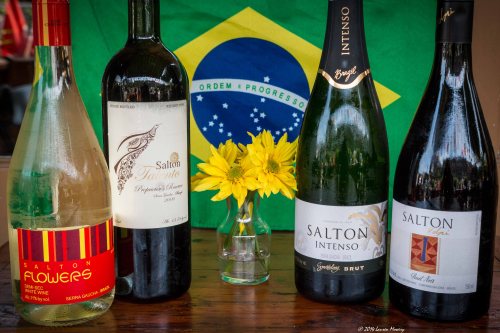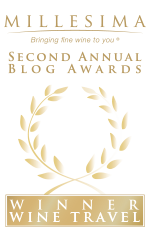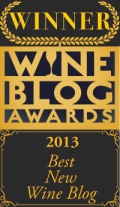Brazil. Quick: what springs to mind first?
FIFA World Cup, Rio Carnival, postcard-pretty beaches, oversized rainforest insects, and unlimited amounts of sizzling skewered meat served tableside? Or perhaps caipirinhas and cachaça, Capoeira, or the upcoming 2016 Olympics?
Of the hundreds of thought permutations possible, few likely included Brazilian wines. That is slated to change.
Last year, Wine Enthusiast declared Brazil a top wine destination for travelers. This year, the World Cup has helped spotlight the Brazilian wine industry. According to Cassie Hitchner of Countertop Wine Collection, an NYC wine importer and distributor who carries Brazilian producer Vinicola Salton in her portfolio, her clients have exhibited greater interest in Brazil than wines from classic European regions. “Everyone wants to taste Brazilian wines right now,” she said.
World Cup attendees can sip on Brazilian wine while watching the fútbol matches, too. Lidio Carraroa, a respected producer of still and sparkling wines, beat out larger rivals for the coveted opportunity to be the official wine supplier of the Cup. Curiously, the brand characterizes itself as “boutique” and espouses dedication to “preserve [sic] the authenticity of each grape variety, each terroir” but then doubled its production to meet the demand requirements of the event, including creating a new line of easy, approachable wines with “global appeal,” as reported in Decanter.
Where do Brazil’s wines come from? Most of the country’s viticultural pursuits occur near the Argentinean border in the southern state of Rio Grande do Sul; the area accounts for nearly 90 percent of the country’s production. Within Rio Grande do Sul, the most developed and important region is Serra Gaúcha within which lies the country’s first Denominación de Origen, the sub-region of Vale dos Vinhedos, awarded in 2001 for Merlot and Chardonnay. (The system of Origin Indication is modeled off of Europe and imposes restrictions on yields and grape varieties within a notable, delimited geographical area).
Despite Brazil’s deep Portuguese heritage, Italian immigrants who settled in the region in the 1800s founded the wine industry. True modernization and expansion started in the 1970s, particularly with the arrival of Moët et Chandon upon its recognition of the area’s potential for sparkling wine. The company built its own facility to produce fizz from Pinot Noir and Chardonnay for the local market. Other important names have invested in the region, and famed “flying winemaker” Michele Rolland has been retained by the Miolo Wine Group to produce high-quality still and sparkling wines.
Although Brazil’s core wine production has been in Serra Gaúcha, acclaimed wine journalist Jancis Robinson and co-author of World Atlas of Wine, 7th Edition, Hugh Johnson, question whether the soil and climate are optimal for the finest expression of vitis vinifera. They observe that “rainfall is exceptionally and inconveniently high and soils tend to drain poorly,” explaining why a preponderance of rot and mildew resistant hybrid grapes, like Isabel, are grown. They note that important producers “have been moving south, developing the Campanha region on the Uruguayan border and neighboring Serra do Sudeste with their drier climate, longer days, and less fertile granite and limestone soils.” Sounds like a promising region to follow over the next several years.
Although the U.S. is an important and leading export market for Brazil, and the last two years saw slight export growth; the wines still remain elusive to consumers (and wine journalists hoping to review them). Fortunately, I was introduced to Ms. Hitchner, who provided samples of her Vinicola Salton collection, which are available in NYC.
Vinicola Salton proclaims to be the first winery in Brazil, celebrating over 100 years of continuous production since the company was officially established in 1910, by…Italian immigrants. Brothers Paulo, Ângelo, João, José, Cézar, Luiz, and Antônio formalized the business started by their father, Antonio Domenico Salton, an amateur winemaker (like most Italian immigrants who arrived at the time).
I received four samples: a dry sparkler; a semi-sweet white blend of Gewürztraminer, Malvasia, and Moscato; a Pinot Noir; and an older 2009 Cabernet Sauvignon/Merlot/Tannat blend.
For those who don’t mind — or prefer — a touch of residual sugar in their wine, the 11.3 percent alcohol NV Salton Flowers makes a lovely, summer aperitif with aromatics of a blooming garden and warm baked peaches.
However, of the four wines, the NV Traditional Salton Brut sparkling for $15, a blend of Chardonnay and Riesling, surprised me most with its satisfying, consistent bubbles (despite being made in the charmat method) and attractive, crisp flavors of green apple and citrus.
It’s a fine effort that I would be pleased to bring to a party — or the next World Cup match. Fortunately, both the U.S. and Brazil squeaked into the next round of play, so I’ll be watching with a glass of Brazilian bubbles in hand.
Where to Buy:
Alphabet City Wine Co. (carries all four wines),100 Avenue C, 212-505-9463
Astor Wines 399 Lafayette Street, 212-674-7500
Where to Try:
Fogo de Chao 40 West 53rd Street, 212-969-9980
Calle Ocho 45 West 81st Street, 212-873-5025
The Fourth 132 Fourth Avenue 212-432-1324









